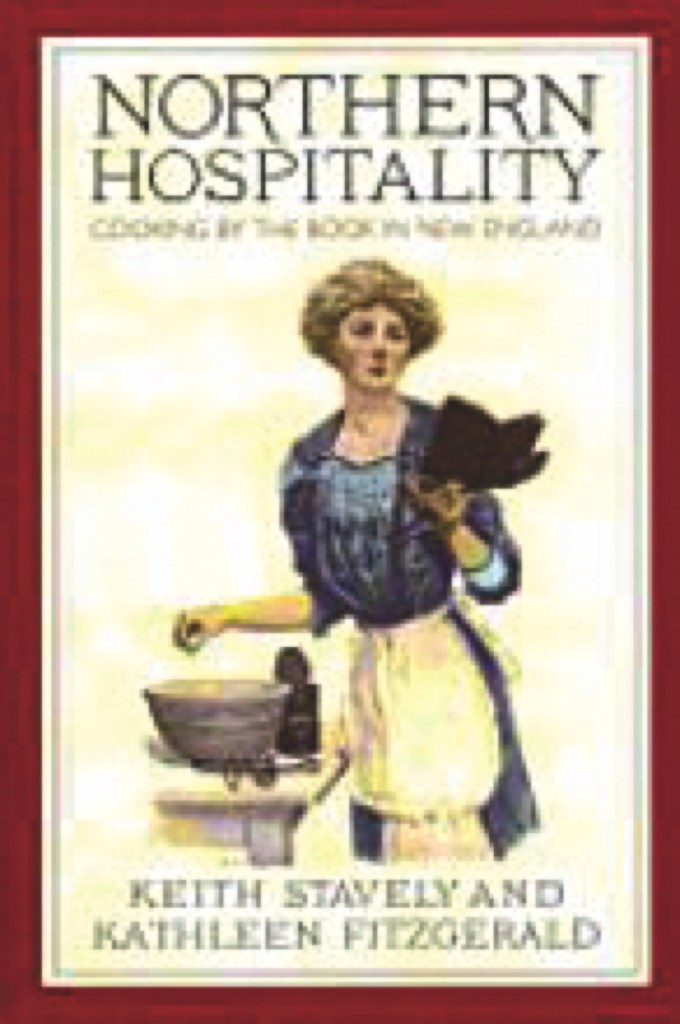If you grew up in New England, chances are high that an invisible woman worked in your family kitchen. She traveled in a well-worn book that was never far from your mother’s side. And her name was a familiar one — Fannie Farmer, creator of the “Boston Cooking School Cook Book,” first published in 1896.
Farmer, whose name remains a New England byword, was one in a long line of lively and thoughtful cooks who created books to pass on their considerable skills and advice. Now they stir, boil and bake again in a fascinating new book, “Northern Hospitality,” subtitled “Cooking by the Book in New England,” by author-librarians Keith Stavely and Kathleen Fitzgerald.
It’s an intriguing account of the people who inspired and shaped New England table fare, as well as a compendium of 400 historic recipes from the 17th to the 20th centuries. Like a mirror held up to our past, it tells us as much about ourselves and our changing tastes as it tells us about “apple pye” and “Connecticut brown bread.”
Early American settlers weren’t looking for fancy desserts and finger bowls. Apart from seasonal variations, the authors tell us, “the majority of 17th-century New Englanders ate one continued round of (salt) meat and legume or (root) vegetable stews morning, noon and night.”
The first American cookbook made its appearance in 1796. Until then, women who could read and aspired to more than stews around the clock looked for help to books published primarily in England. Even at that, cooking was only one part of the larger picture of household management, and a fairly minor part at that. The primary purpose was to help women run households free of hardships that plagued less fortunate homes.
“The Number of Receipts in this book are not so numerous as some others, but they are what will be found useful and sufficient for any Gentleman’s Family,” declared English cookbook author Elizabeth Raffald in the late 18th century. Raffald’s use of the word “receipts” rather than “recipes,” by the way, brought back welcome memories for me, as my grandmother practiced the same usage in a lifetime lived through much of the 20th century.
As Stavely and Fitzgerald remind us, “The point is not that the book is small but that it is properly proportioned, like the cookery that it makes available and the genteel way of life that it enables.” Even with low rates of literacy for women, the books were important to the lives they touched.
Fannie Farmer broadened and added to that importance by emphasizing standardized measures and procedures that enable her recipes to continue to thrive today.
Consider, by contrast, another author, Lydia Marie Child, born in 1802. Child’s recipe for “Fricasseed Chicken, Brown,” dating from 1833, suggests that “butter and flour must be used in making gravy in such quantities as to suit yourself for thickness and richness.”
Not much guidance there. For the inexperienced cook, however, Child tosses out a hint: “A pint of gravy is about enough for two chickens: I should think a piece of butter about as big as a walnut, and a table-spoon of flour, would be enough for the gravy.”
There’s a nice kitchen coziness in that recipe but, as anyone who cooks can sense, there’s also room for error enough to make the difference between gravy and library paste.
Looking back through the recipes and techniques recounted in these cookbooks reminds us that history does record progress that may not be so dramatic as space flights and social networks but accounts for real and welcome change nonetheless.
I don’t know whether I’d be serving a mess or a miracle if I tried the apple pudding recipe from E. Smith’s “Compleat Housewife” published in 1739. Have a look at how it reads:
“Peel and quarter eight golden-runnets or twelve golden-pippins; cast them into water, in which boil them as you do Apple-sauce; sweeten them with loaf sugar, squeeze in them two lemons and grate in their peels; beat eight eggs, and beat them all well together; pour it into a dish cover’d, and with puff-paste, and bake it an hour in a slow oven.”
Compare that for ease and accuracy to a modern standardized recipe for apple crumble or apple crisp.
Progress is what dribbles down your chin.
Nancy Grape writes book reviews for The Maine Sunday Telegram.
Send questions/comments to the editors.



Success. Please wait for the page to reload. If the page does not reload within 5 seconds, please refresh the page.
Enter your email and password to access comments.
Hi, to comment on stories you must . This profile is in addition to your subscription and website login.
Already have a commenting profile? .
Invalid username/password.
Please check your email to confirm and complete your registration.
Only subscribers are eligible to post comments. Please subscribe or login first for digital access. Here’s why.
Use the form below to reset your password. When you've submitted your account email, we will send an email with a reset code.